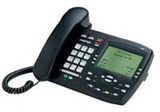When shopping for a VoIP phone system, you want to be sure you are getting…
The Future Of Communications
PSTN
Public Switched Telephone Network, or PSTN, is also known as POTS, or plain old telephone service. That designation alone is self-explanatory. Formerly our sole communication route, emerging new technologies seem to be pushing PSTN out of the picture. Some are hesitant to make the switch, as PSTN offers a bit more reliability, however, VoIP systems and Unified communications offer more practical services.
VoIP
VoIP systems experienced a gradual climb to the top. Its allure of decreasing costs and improving scalability and flexibility were promising, but ironing out all the kinks took some time. Still, that didn’t stop customers from signing up, and now, with necessary improvements and a solid reputation, many businesses are making the switch (if they haven’t already). Since the feat of lowering costs was achieved, VoIP systems can now focus on better integration for a well-rounded user experience.
Unified Communications
UC operations help to bring all types of communication together for one seamless experience. The focus is now put on creating an effective experience for the employee, boosting productivity and company morale. A spotlight on the customer experience should be emphasized as well. Since our society values independence, and much like the self-checkout registers at grocery stores, when calling in for customer support, an easy, self-service option should be available before resorting to speaking to an agent. While many appreciate speaking directly to an agent, others would much rather resolve an issue as quickly and simply as possible. As time goes on, fine-tuning of UC features and an expansion to include more routes of communications (namely texting) will likely occur, thus, perpetuating the appeal of UC.
Mobile/Wearable Technology
The development of better technologies will further enhance the user experience. This is especially true for mobile and wearable technology. We will likely see an increase in wearables in the workplace, as they could potentially provide employee tracking and push notifications. This would allow workers the freedom and flexibility of working out of office while still remaining on track with tasks and schedules.
WebRTC
WebRTC stands for Web Real-Time Communication, allowing direct connections through websites. Through your browser, WebRTC would voice and real-time communication without the necessity of a client application. For now, WebRTC is still fairly knew and not widely known. Many predict that once the ball gets rolling on WebRTC, we will begin to see it in implemented within more and more businesses.
What are your predictions for the future of business communications? Which system do you think will prevail over time? Share your predictions with us on Facebook, Google+, Twitter, and Pinterest.
For your business phone system needs, shop our selection of new and refurbished equipment online or give us a call at 1-800-564-8045. If you have any questions, please feel free to contact us and we’ll be happy to help.






Tags: telecom news, telecom trends, voip phone systems, voip phones







